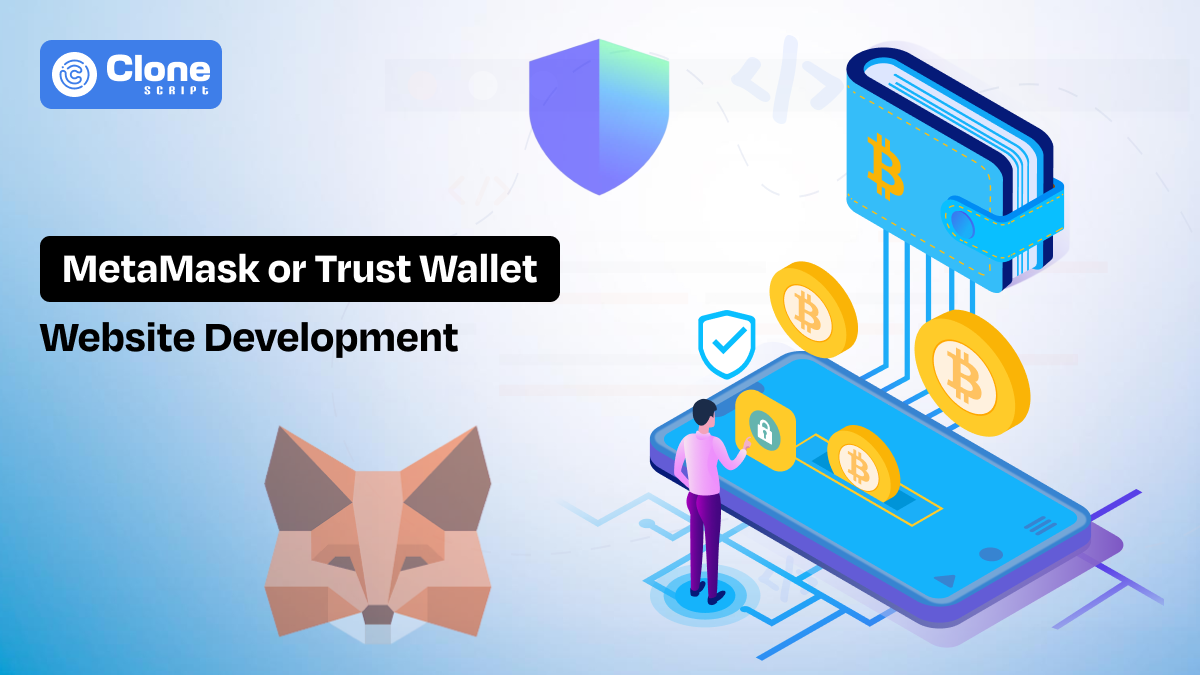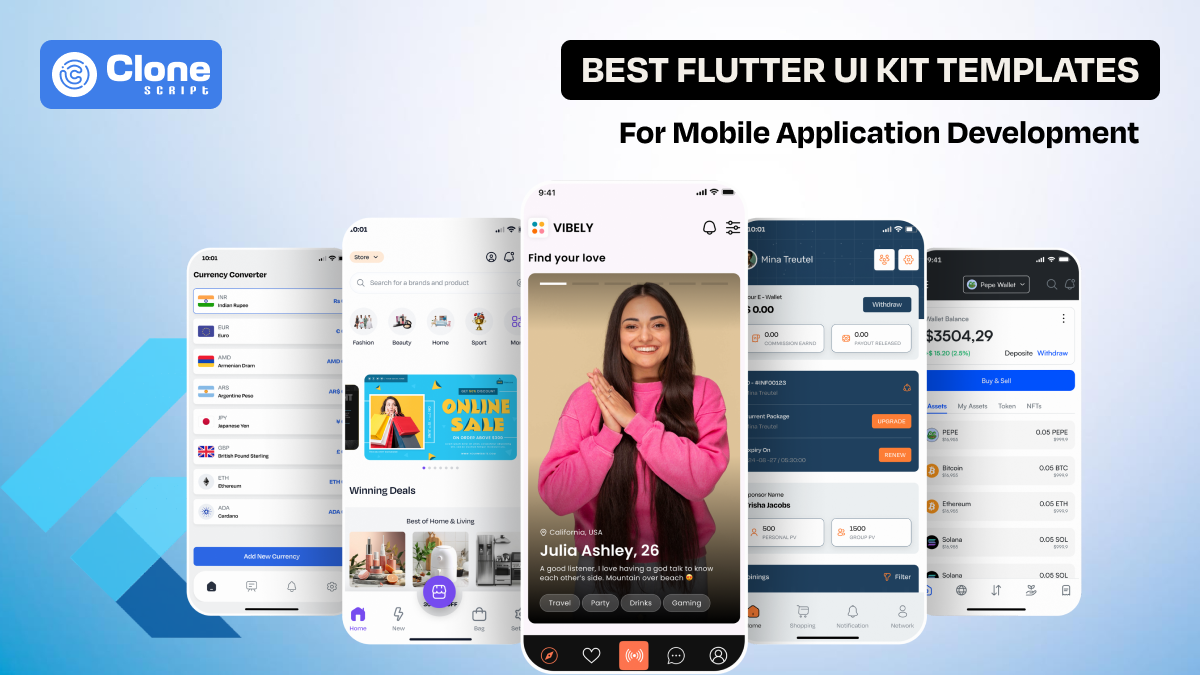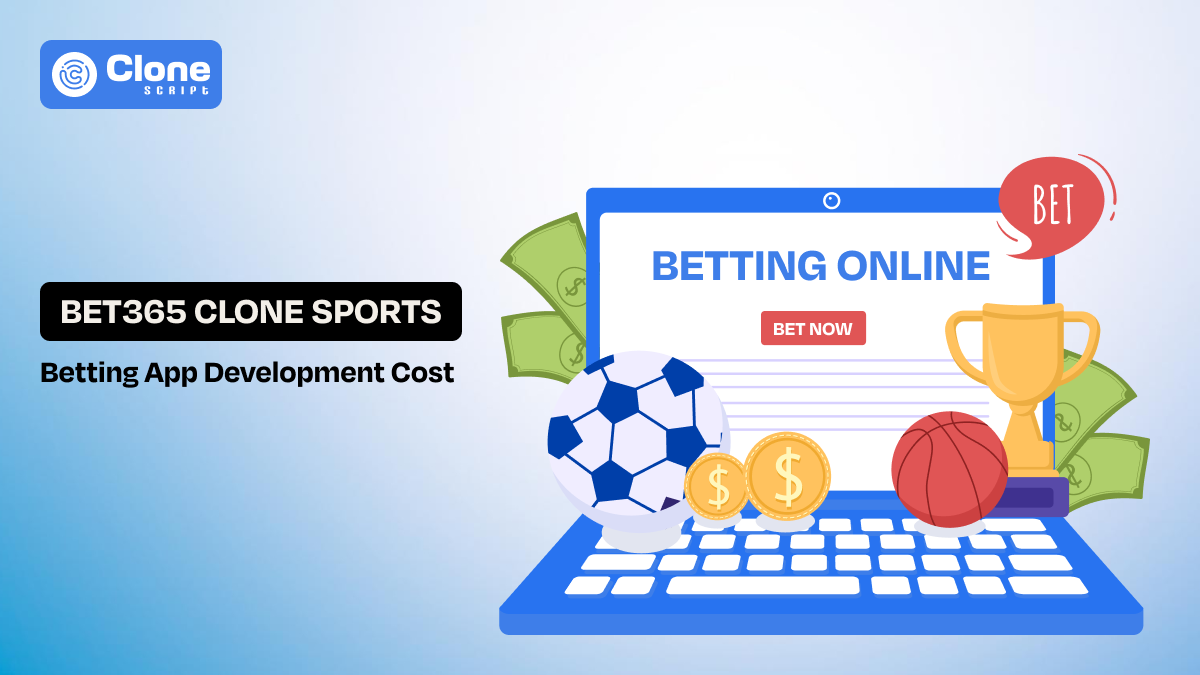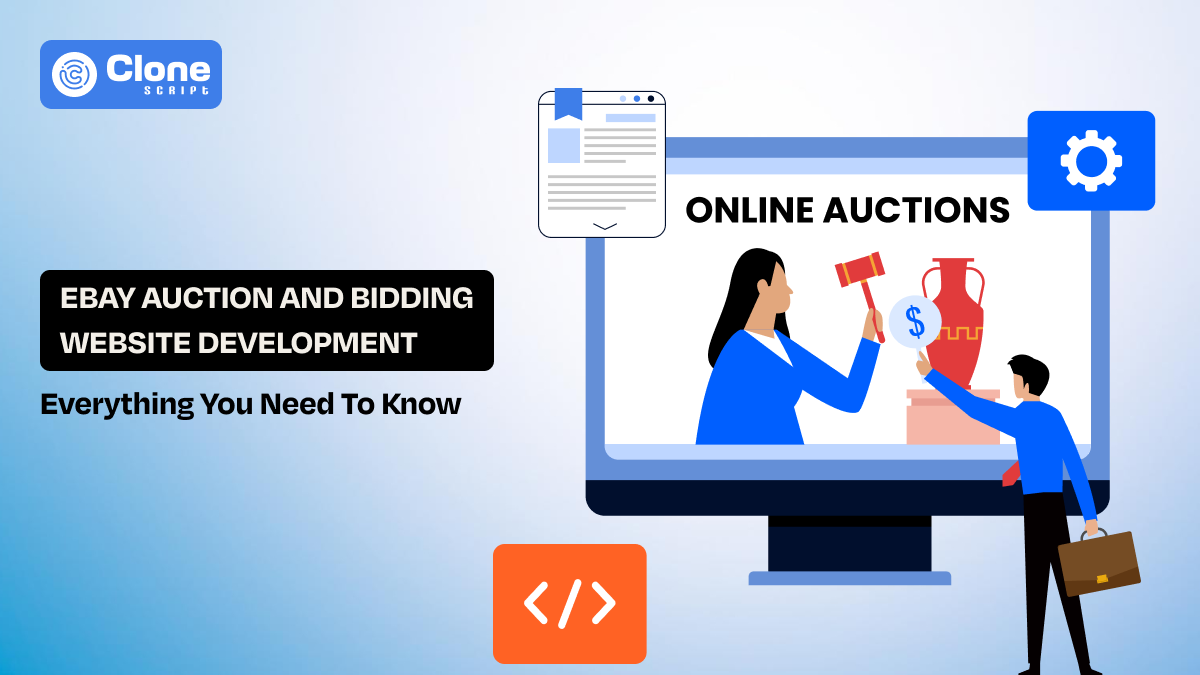How to Build a Crypto Wallet Website Like MetaMask or Trust Wallet
Since the rise of DeFi-powered mechanisms and advanced layer security protection, the crypto wallet has become a valuable asset. The most popular wallets are: 1. MetaMask and 2. Trust Wallet. The demand for customized Web3 wallet platforms is growing daily.
Whether you're a blockchain startup, a freelance developer, or a Web3 entrepreneur, building your crypto wallet website allows you more options. You can control the user experience, add unique features, and position your product successfully in the market.
In this article, we’ll guide you through how to create a crypto wallet website from the ground up using a pre-built template. You’ll also learn what features matter most, how to replicate what MetaMask and Trust Wallet do best. Lastly, understand how to get your wallet site ready to stand with the pioneer brands.
Why Build Your Own Crypto Wallet Website?
In the early days of cryptocurrency, wallets were simple tools used primarily for storing and transferring coins. But today, a crypto wallet has evolved into much more than a digital vault. It has become the primary interface for Web3, an all-in-one identity system, access key, and financial dashboard for users navigating the decentralized world.
A modern blockchain wallet site functions as:
-
A secure gateway to decentralized apps (dApps)
-
A login mechanism for blockchain-based services
-
A payment system for digital assets
-
A portfolio tracker for tokens, NFTs, and DeFi investments
By launching your wallet, you're not just building a product. You're creating a core layer of blockchain infrastructure that can drive user engagement, enable business models, and position your brand at the center of Web3 activity.
Here’s a deeper look at why this makes strong business sense:
1. Control the Ecosystem
With your crypto wallet website, you decide exactly how the platform works: from the blockchains it supports to how users interact with it.
-
Want to support only Ethereum Layer 2 chains like Arbitrum or zkSync? You can.
-
Want to prioritize your token in the wallet’s interface? No problem.
-
Want to pre-load popular NFT marketplaces or integrate staking protocols? Go for it.
This level of control isn’t possible when you rely on third-party wallets.
2. Brand Ownership
When you send users to MetaMask or Trust Wallet, you're giving away valuable brand exposure. With your wallet website, you get to:
-
Use your logo, colors, and domain
-
Customize website UI/UX design for your community
-
Offer a consistent, on-brand journey from start to finish
Think of it like this: every time a user opens your wallet, they’re engaging with your brand, not someone else's. That kind of retention and recall is priceless, especially in Web3, where community is everything.
3. Revenue Potential
A custom website isn’t just functional. It’s a business asset.
Here are a few ways you can monetize it:
-
Transaction Fees: Take a small percentage on token swaps or transfers.
-
Affiliate Commissions: Integrate fiat on-ramps or third-party DeFi platforms and earn referral revenue.
-
Premium Features: Offer advanced portfolio tracking, priority gas estimations, or multi-chain analytics for a monthly fee.
-
Staking or Token Locking: Build your staking system or integrate existing DeFi protocols and earn from user participation.
Launching a MetaMask wallet clone app or Trust Wallet clone specifically for your community allows you to capture economic value that would otherwise go to general-purpose wallets.
If you're already building a blockchain product, this is a smart way to add a monetization layer without launching a new token or raising VC funds.
4. Niche Positioning
The biggest wallets in the market are designed for everyone, which means they’re not particularly optimized for anyone.
By creating your wallet, you can target a specific user base and build features that make their experience seamless:
-
For NFT artists/collectors: Add a gallery view, floor price tracking, or royalties dashboard.
-
For DeFi users: Include built-in access to yield farms, liquidity pools, and cross-chain bridges.
-
For Web3 gamers: Focus on NFT assets, in-game tokens, and seamless login for blockchain-based games.
Using a crypto website template with modular architecture, you can build out your wallet in stages. Start small, test features with your audience, and scale based on feedback. This gives you the speed of a template and the flexibility of a custom solution.
In short, you can own a niche that big wallets don’t serve well and become the go-to solution in that space.
Features of MetaMask & Trust Wallet You Should Replicate
To be the next secure Web3 wallet application like MetaMask and Trust Wallet, focus on the features they have. After all, users are interested in your product only once they feel secure, have ease of accessibility, and are promised functionality.
Below are the core functionalities your wallet website design must include:
1. Multi-Chain & Multi-Token Support
Today’s crypto users don’t live on one blockchain. They jump between Ethereum, BNB Chain, Polygon, Avalanche, and more.
To be competitive, your crypto wallet website must support:
-
Multi-chain compatibility from the start
-
Token standards like ERC-20, BEP-20, and custom tokens
-
Seamless switching between chains
-
Real-time token detection and balance updates
Without this, your wallet risks becoming irrelevant in an increasingly cross-chain world. This is a cornerstone of any professional blockchain wallet site.
2. Secure Wallet Creation & Private Key Management
Security is non-negotiable in crypto.
Like MetaMask and Trust Wallet, your website must:
-
Generate wallets using industry-standard BIP39 seed phrases
-
Encrypt private keys and store them client-side
-
Offer clear backup/export options
-
Educate users about securing their seed phrase
Whether you're using a crypto wallet HTML template or building from scratch, make sure the onboarding process is secure, transparent, and beginner-friendly.
3. Responsive Crypto Wallet Website Design
Your wallet must function flawlessly across all devices: desktop, tablet, and mobile.
But how?
It’s simple. Use a responsive crypto wallet website design that ensures:
-
Optimized layouts for small screens
-
Touch-friendly navigation
-
Fast loading and minimal code bloat
-
Intuitive UI/UX aligned with user expectations
Your wallet isn’t just software. It’s the user’s first point of contact with Web3. A clunky design equals instant distrust. A sleek, responsive layout builds confidence.
Choose a website template that’s already mobile-optimized, so you can save development time and deliver quality right away.
4. DApp Browser & WalletConnect Support
Interacting with decentralized apps (dApps) is one of the main reasons people use wallets.
To replicate MetaMask’s functionality, your wallet should:
-
Expose Web3 APIs for DApps to connect directly
-
Support WalletConnect for seamless interaction with external platforms
-
Enable signing of transactions and smart contracts
-
Include a DApp browser (especially if targeting mobile)
Whether it’s staking on a DeFi platform or minting NFTs, users expect their wallet to be a gateway, not a dead-end. Your wallet website design should prioritize this connectivity.
5. Transaction History, Balances, and Gas Fee Info
Transparency builds trust in the DeFi industry. If you don't win the trust of users, forget about being the next MetaMask-like wallet.
Your wallet website must give users:
-
A clear display of token balances (native and custom)
-
Gas fee estimations and current network congestion info
-
A searchable transaction history
-
Direct links to Etherscan, BscScan, or other blockchain explorers
Don’t underestimate the power of visibility. A well-designed balance dashboard and transaction feed are key elements of a user-centric Trust Wallet clone.
6. Optional But Powerful Features for Growth
To stand out from other wallet clones and generic wallet apps, consider integrating advanced functionality that power users crave:
-
NFT Management: Visual NFT gallery, metadata display, floor price tracking
-
Staking Dashboards: Delegate tokens and view live staking rewards
-
Token Swaps: Built-in DEX aggregators like 1inch or Uniswap
-
Portfolio Analytics: Track net worth, performance, and asset allocation over time
These value-add features elevate your MetaMask wallet clone from "just another wallet" to a full-featured financial hub that users want to return to.
By focusing on these six areas, you'll also create a differentiated, modern, and scalable crypto wallet website ready for the next wave of Web3 users.
How to Build a Crypto Wallet Website Using a Template?
Here’s a step-by-step guide to help you build your crypto wallet site using a template:
1. Choose a High-Quality Crypto Wallet HTML Template
Start by selecting an HTML template that is responsive, developer-friendly, and feature-rich. A good template should include:
-
Dashboard UI for balances and transactions
-
Token listing and detail views
-
Wallet creation interface
-
Support for mobile and desktop devices
-
Dark mode/light mode options
-
Built-in pages for security alerts, network settings, and staking
Make sure the design is flexible enough to scale and customizable for your brand identity. Opt for a responsive crypto wallet website design to ensure it looks great on all devices.
Tip: Look for templates built in React, Vue, or Bootstrap for easier frontend integration.
2. Set Up the Frontend Environment
Once you've chosen a template, install it in your development environment. Most premium website templates come with detailed documentation and can be set up with:
-
Node.js and NPM (for JavaScript-based templates)
-
HTML/CSS, if you're working with static code
-
Vue or React framework setups for dynamic UI components
Organize the codebase for scalability. Divide UI components into folders like Wallet, Transactions, Settings, and Dashboard.
3. Integrate Blockchain Functionality
Your wallet isn't just about how it looks. It’s about what it can do. This is where you start adding real crypto functionality. You’ll need to:
-
Integrate Web3.js, Ethers.js, or similar libraries to interact with Ethereum-based blockchains
-
Use WalletConnect or in-browser wallets for DApp interaction
-
Enable wallet creation and secure key management (seed phrase generation, client-side encryption)
-
Fetch token balances, gas prices, and transaction history
Important: Never store private keys on your servers. Always implement secure client-side key management.
4. Add Multi-Chain Support
To match MetaMask or Trust Wallet capabilities, your crypto wallet website must support multiple blockchains. This includes:
-
Ethereum (ERC-20 tokens)
-
Binance Smart Chain (BEP-20 tokens)
-
Polygon
-
Custom RPC networks
Let users manually add networks and tokens, or pre-integrate them into your website design to simplify onboarding.
5. Enable Token Swaps, Staking & More
Want to create a wallet that goes beyond basic storage? Add features that generate revenue and add user value:
-
Token Swaps: Integrate DEX APIs (like Uniswap, 1inch) to enable in-wallet token exchange
-
Staking Dashboards: Let users lock tokens and earn rewards
-
NFT Gallery: Display ERC-721 and ERC-1155 assets in a clean format
-
Portfolio Analytics: Help users understand asset performance
These advanced modules turn a basic Trust Wallet clone into a powerful financial dashboard.
6. Customize for Branding and UX
Don’t just settle for a generic layout. Tailor the wallet website design to match your project’s identity:
-
Update the color scheme and typography
-
Replace placeholder content with your project’s messaging
-
Add your logo and favicon
-
Create a consistent onboarding and help experience
A polished UI improves credibility, which is essential when users are trusting you with their assets.
7. Test Responsiveness and Device Compatibility
Before launch, ensure your responsive crypto wallet website functions perfectly across:
-
Mobile browsers (Safari, Chrome, Brave)
-
Desktop (Windows, macOS)
-
Tablets
-
Various screen sizes
Use tools like BrowserStack or Chrome DevTools to simulate different viewports and fix layout issues.
8. Connect to a Backend (Optional)
If you need additional features like user profiles, transaction notifications, or custom token metadata, connect your frontend to a backend API.
Use the following:
-
Node.js with Express for custom endpoints
-
Firebase for real-time updates
-
MongoDB or PostgreSQL for user tracking
Reminder: Don’t store seed phrases or private keys in your database, only non-sensitive metadata.
9. Deploy Your Wallet Website
Once your blockchain wallet site is ready, deploy it to a reliable hosting platform like:
-
Vercel or Netlify (for frontend-only deployments)
-
AWS or DigitalOcean (for full-stack apps)
-
IPFS or Filecoin (for fully decentralized hosting)
Make sure your app loads fast, has an SSL certificate, and uses SEO-friendly routing to rank in search engines.
By following this blueprint and using a high-quality crypto website template, you can rapidly develop a secure, scalable, and user-friendly wallet experience without reinventing the wheel.
Why Use Our Crypto Wallet Website Template?
Our HTML template is built for developers, startups, and crypto projects who want to launch faster without sacrificing quality. Here’s why it stands out:
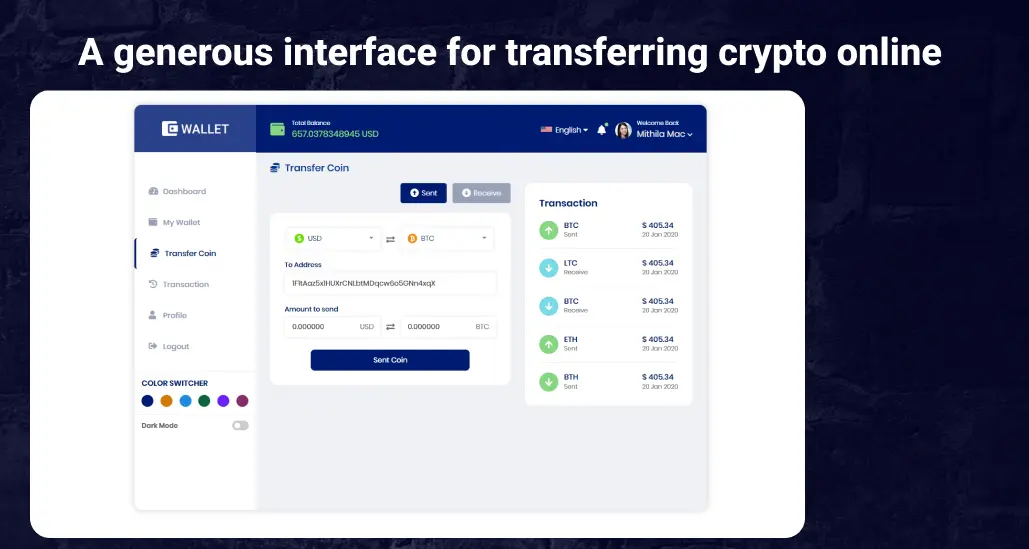
1. Ready-Made Wallet UI Components
Our template includes all the front-end elements you need for a functioning blockchain site:
-
Wallet dashboard with live token balances
-
Transaction history view with support for EVM explorers
-
Token swap interface (DEX-ready)
-
Staking and DeFi integration UI
-
NFT gallery section
-
Settings panel with chain selection and WalletConnect support
Instead of designing manually, you get production-grade UI components built to industry standards that are ready to be hooked up to your Web3 backend.
2. Mobile-First, Responsive Wallet Design
Crypto users are on the move; your wallet needs to work flawlessly on mobile.
Our responsive wallet website design knows your app works across:
-
Smartphones (iOS, Android)
-
Tablets
-
Desktops
-
Any screen resolution
We use flexible layouts, touch-friendly components, and responsive grids, so you don’t lose users to broken UI or poor mobile experience.
3. Modern Tech Stack and Clean Code
Built with HTML5, CSS3, JavaScript, and Bootstrap (or React/Vue options), the template provides:
-
Clean, well-commented code
-
Easy customization for developers
-
Fast loading times and SEO-friendly architecture
-
Lightweight and secure structure
It’s built with scalability in mind, so whether you’re launching an MVP or a full-featured MetaMask wallet clone, it’s built to grow with you.
4. Support for Multi-Chain & Token Standards
Our template supports key wallet standards:
-
Ethereum, BNB Chain, Polygon, and custom EVMs
-
ERC-20, BEP-20, and custom token support
-
Pre-integrated token listing components
-
Modular design for adding new chains
This means you’re not locked into a single blockchain. You can offer multi-chain wallet support just like Trust Wallet without having to code everything from scratch.
5. Customizable to Match Your Brand
Whether you're launching a DAO, an NFT marketplace, or a DeFi product, you’ll want your wallet to reflect your unique identity.
Our website template allows you to easily:
-
Change fonts, colors, and themes
-
Add your logo and favicon
-
Insert custom pages for terms, support, and integrations
-
Translate into multiple languages
With full control over the UI, you create a fully branded wallet website design experience that builds user trust.
6. Optimized for Speed and SEO
Although Web3 apps are primarily functional, having a fast and search-optimized site is still important, especially if your wallet is publicly discoverable.
The template uses:
-
Clean URL routing
-
Schema markup for wallets and services
-
Optimized image and icon delivery
-
Lightweight CSS/JS for faster load time
This gives your wallet a strong SEO base, increasing the chances of ranking on Google.
7. One-Time Cost, Full Ownership
Unlike SaaS platforms or white-label solutions that charge monthly, our wallet template comes with a one-time license fee and full ownership of the code.
You can:
-
Use it in commercial projects
-
Modify or extend it as you see fit
-
Host it anywhere (centralized or decentralized)
-
Avoid vendor lock-in
If you’re serious about launching a sustainable wallet platform, this gives you total freedom. There are no subscriptions, no API usage limits.
8. Built-In Templates for Trust Wallet & MetaMask Clones
Want to launch a wallet that feels familiar?
We’ve included pre-designed layouts that mimic the core UI/UX of leading wallets like:
-
MetaMask wallet clone — Web3 browser extension-style dashboard
-
Trust Wallet clone — Mobile-first interface with simple token and DApp access
These clones act as a foundation, which you can extend with your branding, tokens, and features.
By using our crypto wallet website template, you skip the guesswork, avoid costly redesigns, and go live faster with a professional-grade product that’s flexible, modern, and secure.
Conclusion
Developing your crypto wallet website is a smart investment for blockchain startups, developers, and Web3 entrepreneurs. It offers full control over features, branding, and user experience, while unlocking strong monetization opportunities and niche market positioning.
By focusing on essential functionalities, you create a competitive, scalable product. Using a ready-made crypto wallet template accelerates development, reduces cost, and ensures industry-grade security and performance. Launch your wallet today to become a trusted gateway in the growing Web3 ecosystem.
 BTC - Bitcoin
BTC - Bitcoin
 USDTERC20 - USDT ERC20
USDTERC20 - USDT ERC20
 ETH - Ethereum
ETH - Ethereum
 BNB - Binance
BNB - Binance
 BCH - Bitcoin Cash
BCH - Bitcoin Cash
 DOGE - Dogecoin
DOGE - Dogecoin
 TRX - TRON
TRX - TRON
 USDTTRC20 - USD TRC20
USDTTRC20 - USD TRC20
 LTC - LiteCoin
LTC - LiteCoin

